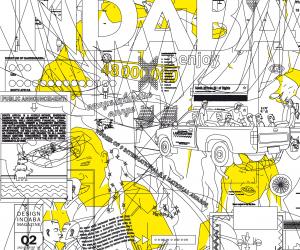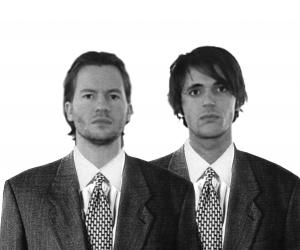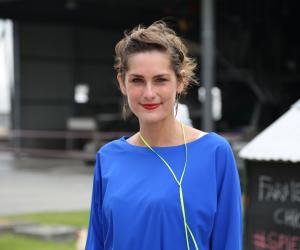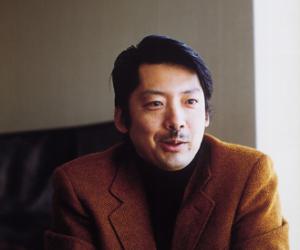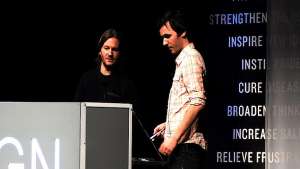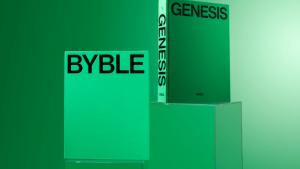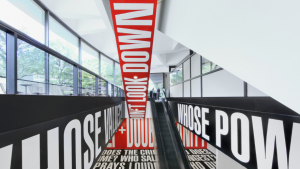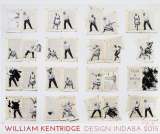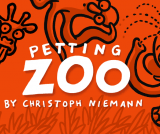First Published in
When Ivan Chermayeff kicked off this year's Design Indaba, we were transported back to another age. An age in which beautiful, simple logos represented the American Dream; pure in form and (at least relatively) pure in deed. The marks produced by Chermayeff in his 50-year partnership with Tom Geismar will forever be associated with the Golden Age of corporate United States. These were logos and companies that were sure of themselves and built to last. Some of the firm's work stayed in use for 40 years - impossible to imagine today with brand managers who don't know when to leave the good alone.
But, in a cunning piece of scheduling, the next presentation underlined just how much perceptions have changed since the early days of Chermayeff and his contemporaries. In conjunction with Milton Glaser, Mirko Ilić is the author of The Design of Dissent, a compendium of activist design, much of it incorporating comments on the activities and identities of Chermayeff's clients. In four decades, as Ilic showed us, the symbols of corporate US have switched from representing freedom to representing oppression.
While Chermayeff agreed that he finds it harder and harder to describe "what the hell graphic design is about" he clings to the view that it is "mostly about enjoying yourself and getting paid for it". Ilic's presentation hinted at a less happy outlook among today's young practitioners. We have gone from a period when, if no-one else knew what a graphic designer was, at least designers themselves did, to a time when everybody has heard of graphic design but its practitioners are now confused and uncertain of its role - certainly when it comes to its relationship with big business, the very bedrock on which careers such as Chermayeff's were built.
Subsequent presentations, however, suggested that there is still a good degree of enjoyment and satisfaction to be gleaned from a career in design. Take Airside: Celebrating 10 years together, the London-based multidisciplinary studio told us that they had set up on the principles of, one, blowing people's minds; two, having fun; and, three, making money. In that order. And the Icelandic/German duo from New York, Karlssonwilker, are evidently finding great satisfaction from a studio kept deliberately small, with none of the pressures to take money jobs felt by those designers with many mouths to feed.
Talking of feeding (see what I did there) one of this year's most entertaining contributions came from the youngest speaker at Design Indaba 2008, Marije Vogelzang. A graduate of the Design Academy, Eindhoven (the forward-thinking Dutch college chaired by another Design Indaba speaker, Li Edelkoort), Vogelzang specialises in "eating design". She has her own restaurant in Rotterdam and, from an idyllic studio in Amsterdam, works as a consultant on the presentation and meaning of eating and food. One of her projects, for example, was to create a meal for Droog Design in which the entire table was covered in dough. Heat lamps over the table slowly cooked the dough so that diners could eat their meal out of it.
For me, the remaining highlights came on day three with presentations from Gert Dumbar, J Abbott Miller and, in particular, Shin-ichi Takemura. The entertainingly irascible Dumbar began with the somewhat outrageous claim that the difference between advertising and graphic design in Holland can be traced back to World War II. In the war, he said, a lot of advertising people collaborated with the occupiers whereas most graphic designers worked for the Resistance - "forging passports and so on".
"As a graphic designer," he said, "you should have hang-ups and you should scream about them. One of mine is that I hate marketing-driven design. It is absolute nonsense. Marketing people pretend they know about design but they are too stupid to notice the difference between anything. I hate them. They wear the wrong clothes, they have the wrong cars, the wrong third wives and they live in the wrong houses."
"Conferences that are only for graphic design are extremely boring," he went on to say. "Graphic designers to me nowadays are the most vain people in the world after ballet dancers, opera singers and architects. What is the value of all this graphic design? It doesn't thrill me or excite me."
Pentagram NY partner Miller confessed to sharing Dumbar's view of architects but claimed to find their work far more inspiring than that of graphic designers: "I tend to think in terms of plan, section and elevation even though I'm not an architect. Typography is really the architectural aspect of graphic design," he said. Miller showed a variety of beautifully-realised work ranging from print to web to exhibition design, all of which was imbued with a rare intelligence.
But for me the most memorable presentation of this year's Design Indaba was the one from Shin-ichi Takemura. He began by playing the sound of traditional Japanese garden ornaments - as rain water falls into these ceramic vessels, they make a beautiful, musical sound. Takemura then revealed that the sounds we were hearing were live. There we were, in an air-conditioned hall in Cape Town, listening to rain falling in a temple in Kyoto. It was magical. Takemura told us that this was part of a project called Aquascape, in which he is placing microphones around world to listen to rain - he calls it a "global stethoscope project".
More wonders followed: Tangible Earth, a globe on which one can watch, live, the migration of birds, weather patterns or the effects of deforestation over time; Sakura Scape, which tracked the cherry blossom as it blooms across Japan; and the Global Corridor Project, which allows children to talk to their peers live across the world. Takemura spoke of "connecting citizens through the Internet as if it were a central nervous system". His key idea: If we could all see what was happening in real time, without mediation, and if we made personal contact with people who are different to ourselves, we would find it much harder to ignore the effects of disasters or the environmental damage being done.
"I want to develop tools that make people more sensitive rather than technologies like sat nav that eliminate the need for thinking," he declared. "Why build a society where things begin and end with the push of a button? Cool web design is not very meaningful if it never affects anything outside our computer displays."
Every year at Design Indaba, there is one presentation that everyone goes away talking about; one person who reaches out and touches the audience. Judging from the thunderous applause that followed his talk, this year, Takemura was that man. His parting words: "We have the chance to design a more humane civilisation." Amen to that.





































